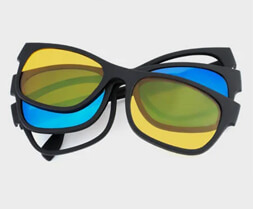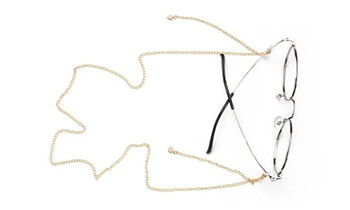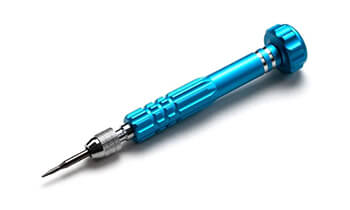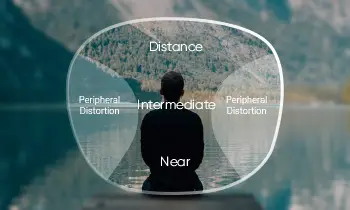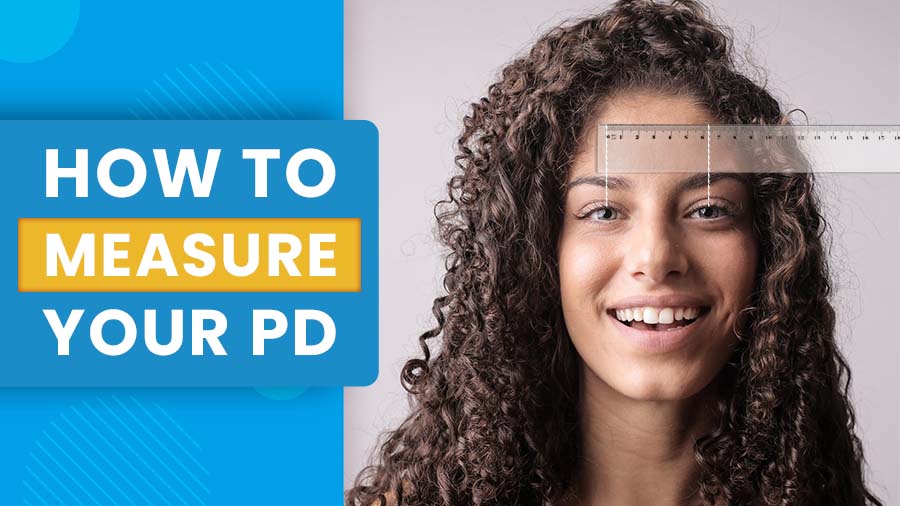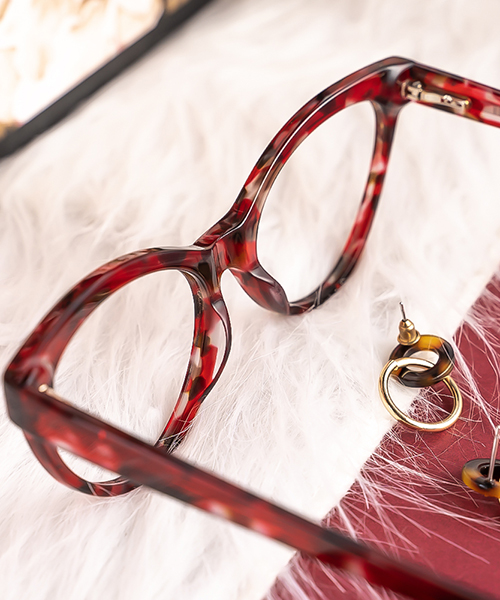Prescription glasses are an essential tool for many people, helping them to see clearly and carry out their day-to-day activities with ease. But, one crucial factor that can make all the difference in the comfort and effectiveness of your glasses is your pupillary distance.
Pupillary distance (PD) is the distance between the centers of your pupils, measured in millimeters. This measurement is crucial for the proper fitting of prescription glasses because it determines where the optical center of the lenses should be located and ensure that you have the correct prescription and that the glasses' optics are aligned correctly.
Position prescription lens according to PD
To center a prescription lens based on a specific PD value, eyeglass makers typically use a process called "decentration." Decentration is the process of adjusting the optical center of the lens based on the wearer's PD. The amount of decentration required depends on the type of lens and the specific PD measurement. For example, for a single vision lens, the optical center of the lens should be aligned with the center of each pupil for optimal vision correction. For a bifocal or progressive lens, the optical center should be aligned with the distance pupil for distance vision and the near pupil for near vision.
The process of decentration involves moving the optical center of the lens relative to the frame's geometric center. To do this, the lens maker will need to know the frame's shape and size, as well as the PD measurement. Once the eyeglass maker has the necessary information, they will use special software to calculate the decentration required to center the lenses based on the specific PD value. The software will take into account the lens type, material, and thickness, as well as the curvature of the lens and the angle of the frame's bridge. The eyeglass maker will then use a lensometer to mark the optical center of the lens based on the calculated decentration. The lensometer will help the eyeglass maker precisely align the lenses with the wearer's PD measurement.
How is PD measured?
An accurate PD measurement ensures that the optical center of the lens is correctly aligned with your pupil's center. This is important because if the lens is not aligned with the center of your pupil, it can cause distorted vision, headaches, and eye strain. Additionally, if the PD is incorrect, it can affect the effectiveness of your glasses, making them less effective in correcting your vision.
PD can be measured using a PD ruler or a specialized instrument called a pupillometer. A PD ruler is a simple tool that is used to measure the distance between the centers of the pupils by holding it up to the face and lining up the ruler's markings with the center of the pupils. A pupillometer, on the other hand, is a more precise instrument that uses infrared technology to take accurate measurements of the distance between the pupils.
It's important to note that measuring PD accurately is essential to achieving the best visual performance and comfort from your glasses. If your PD measurement is off, it can affect the fit of your frames, causing discomfort, headaches, or distorted vision.
The Differences Between Monocular and Binocular PD Measurements
There are two types of pupillary distance (PD) measurements: monocular and binocular. Understanding the difference between the two can help ensure that your glasses provide the best visual correction and comfort, especially if we need to purchase bifocals or progressives.
A monocular PD measurement is the distance between the center of one pupil and the bridge of the nose. This measurement is taken separately for each eye, and it is commonly used for glasses with a single vision lens prescription.
A binocular PD measurement is the distance between the center of both pupils. This measurement is taken when both eyes are aligned and working together, and it is commonly used for glasses with a multifocal lens prescription, such as progressive lenses.
How to Get an Accurate Pupillary Distance Measurement at an Eye Exam
As mentioned above obtaining accurate PD measurements is essential to ensure that your glasses provide the best possible vision correction and comfort. However what many people don't know is that we can obtain accurate PD measurements during an eye exam.
1. Schedule an eye exam with an eye care professional, such as an optometrist or ophthalmologist.
2. Inform the eye care professional that you need a PD measurement and ask which type of measurement they will be taking (monocular or binocular).
3. During the exam, the eye care professional will use a pupillometer or PD ruler to take your measurement. For a monocular measurement, they will measure the distance from the center of each pupil to the bridge of your nose. For a binocular measurement, they will measure the distance between the center of both pupils.
4. Make sure to keep your head still and look straight ahead during the measurement process. Any movement can cause the measurement to be inaccurate.
5. Verify that the measurement is accurate by checking the number on the pupillometer or PD ruler. If you have any concerns or doubts, don't hesitate to ask the eye care professional to take the measurement again.
Why is PD important for different types of glasses?
PD is equally important for all types of glasses, including prescription glasses, sunglasses, and bifocals. In fact, getting an accurate PD measurement is even more critical for specialty lenses such as progressive lenses, which require precise measurements to ensure that the lenses' focal points are aligned with your pupils.
When selecting glasses frames, it's also important to consider your PD measurement. Frames with a narrow bridge can cause the lenses to be placed further apart, leading to a distorted visual experience. Similarly, frames with a wide bridge can cause the lenses to be placed too close together, affecting your visual acuity and comfort.
In conclusion, pupillary distance is an essential measurement in determining the proper fit of prescription glasses. It's crucial to get an accurate PD measurement to ensure that your glasses provide optimal vision correction and comfort. Always make sure to communicate your PD measurement to optician when selecting frames and lenses to ensure that your glasses are tailored to your unique needs. By taking the time to get an accurate PD measurement, you can enjoy clear and comfortable vision with your prescription glasses.







